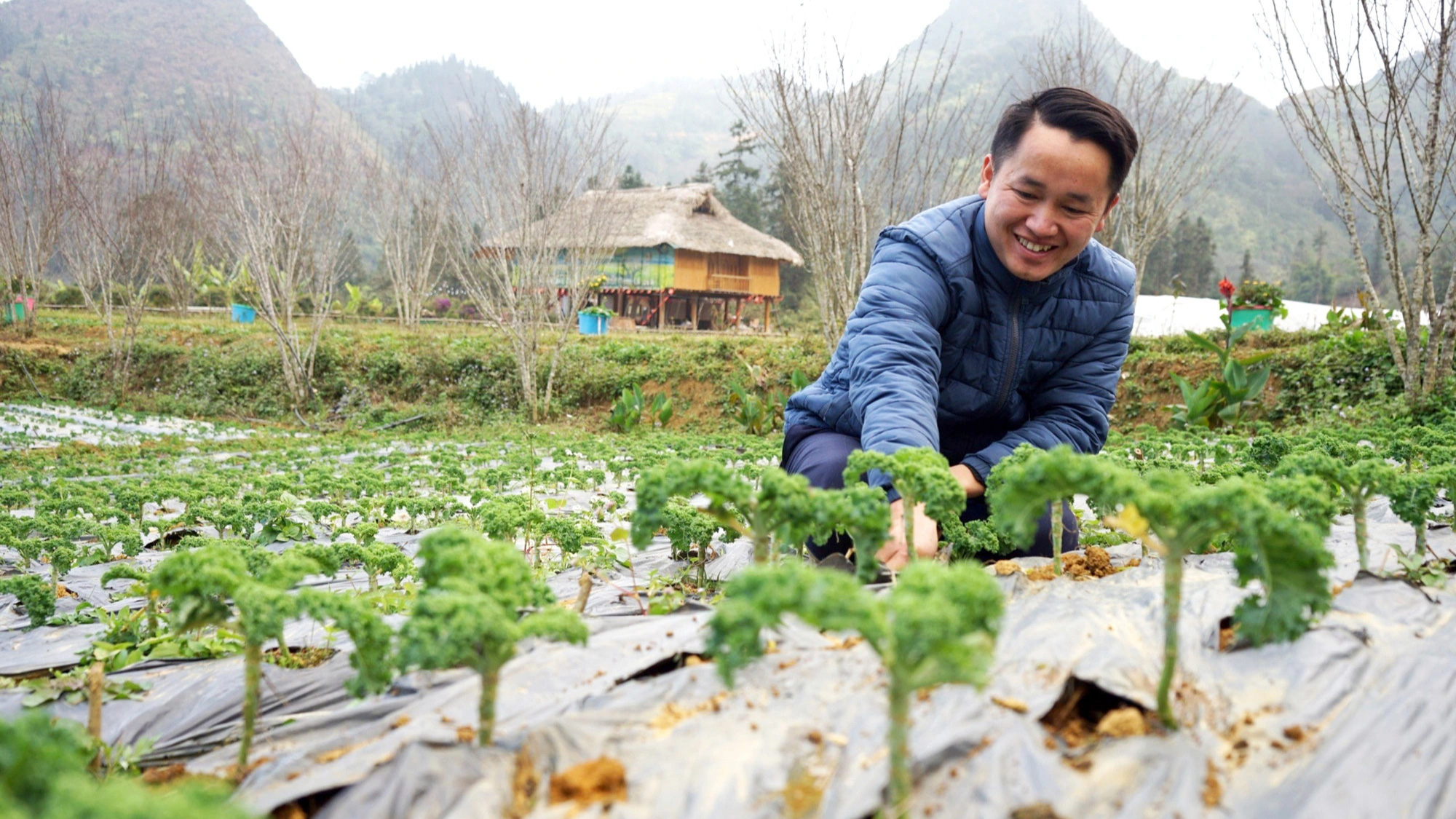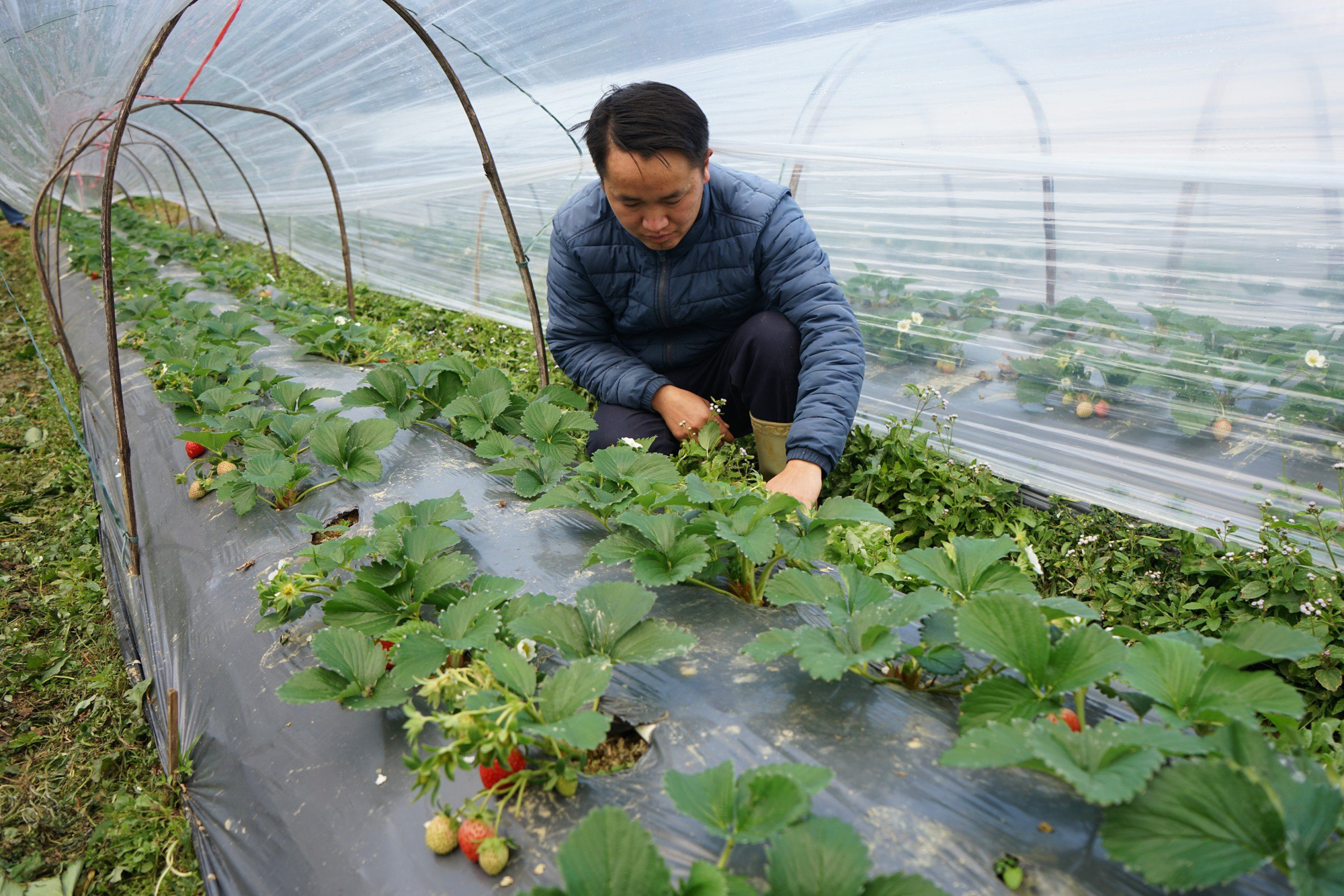In the mountains of northwest Vietnam, approximately 14km from Bac Ha Town in the namesake district of Lao Cai Province, lies a thriving kale farm owned by a millennial Mong ethnic man, drawing tourists from all over to visit.
At 31 years old, Giang Quang Tien embarked on his entrepreneurial journey by selecting kale, revered as the ‘queen of vegetables,’ as his venture’s cornerstone.
With a vision to generate employment opportunities and collaborate with local farmers to cultivate kale sustainably, Tien aspires to provide consumers with safe and nutritious products.
“I aim to specialize in turning out kale-based products that prioritize health and nutrition,” Tien said.
“By doing so, consumers can enjoy clean, high-quality goods made by the hands of our highland community.”
‘Give it a try’
Nestled amidst the tranquil landscapes of Pa Chu Ty Village in Bac Ha District, Lao Cai Province, Tien’s farm offers a respite from urban chaos, inviting visitors to immerse themselves in the natural beauty of the mountains and hills.
Inspired by his experiences at the agricultural service center of Bac Ha District and interactions with Korean agricultural experts, Tien seized the opportunity to introduce kale farming to the region, where rice and corn cultivation dominated traditional practices.
For generations, farmers in Bac Ha District have traditionally relied on a single annual crop of rice or corn, leaving their land fallow for extended periods after each harvest season.
“I realized that by cultivating kale, I could enjoy year-round harvests without the need for repeated planting. So, I decided to give it a try,” Tien reflected.
Putting his words into action, he initially experimented with growing a small quantity of kale.
Encouraged by its success, Tien made a bold decision to resign from his job in 2021, securing capital to lease 30,000 square meters of land in Pa Chu Ty Village to pursue his kale business venture.
He diligently sought knowledge and expertise in planting techniques from various sources, scouring online resources and studying agricultural models from different provinces for valuable insights.
|
|
| Giang Quang Tien tends strawberries at his farm in Bac Ha District, Lao Cai Province, northern Vietnam. Photo: Vu Tuan / Tuoi Tre |
Transforming previously fallow land, Tien dedicated 15,000 square meters solely to kale cultivation, while allocating the remaining area to farming fruit trees and other vegetables.
With improved land conditions, he even expanded the cultivation area for fruit trees, dedicating space specifically for strawberries to meet local consumer demand.
From hardship to success
Tien’s initial days of launching a business in his homeland were incredibly challenging.
To unwind after long hours of laboring in the fields, he erected a hut as a makeshift resting spot for himself and fellow farmers.
Tien faced numerous obstacles due to the exorbitant investment costs.
However, the greatest challenge arose from the fact that no one had ever cultivated kale in the local region.
Then, the COVID-19 pandemic caused more challenges and disruptions.
The kale garden flourished, but selling the produce proved difficult due to social distancing measures and the suspension of transportation between districts and provinces.
Unable to sell the harvested cabbage, Tien swiftly pivoted to finding ways to reach local customers.
He adjusted the planting area to meet the community’s needs.
“Despite the hardships during the pandemic, I managed to navigate through without significant losses,” Tien recounted.
“Post-pandemic, I actively sought investment to ensure the farm’s resilience and current success.”
As challenges gradually waned, Tien’s farm has expanded beyond its original boundaries, now encompassing over 60,000 square meters.
In addition, he has introduced a stilt house area showcasing farm products, enticing tourists to visit.
The farm has become a source of stable income for local workers, particularly ethnic communities.
With the growing area becoming increasingly bigger, kale production has surged, prompting Tien to explore innovative product ideas.
To date, he has introduced a range of kale-based products such as kale vermicelli, kale powder, kale dumplings, and kale cookies, all of which have been well-received by customers.
Like us on Facebook or follow us on Twitter to get the latest news about Vietnam!




















































